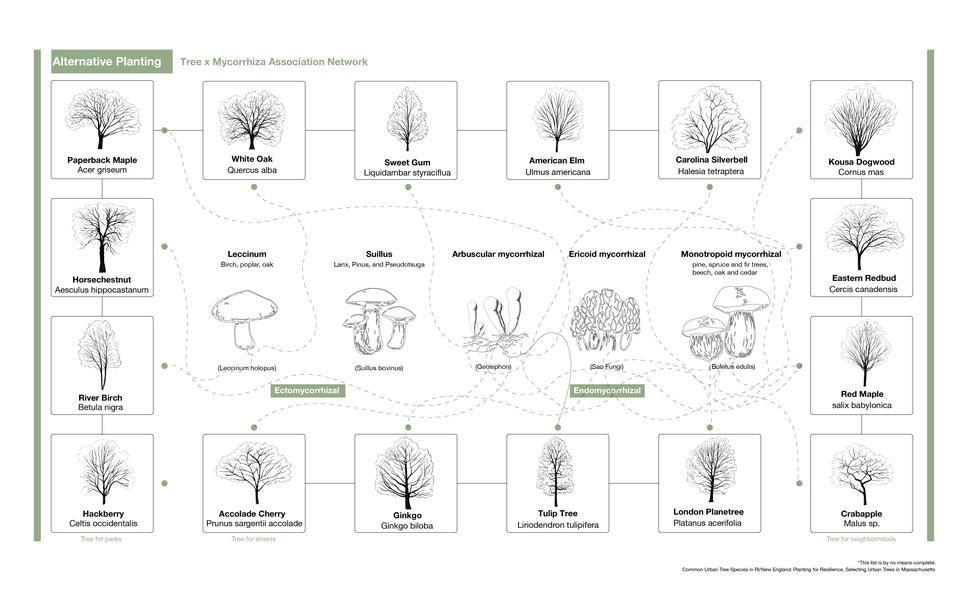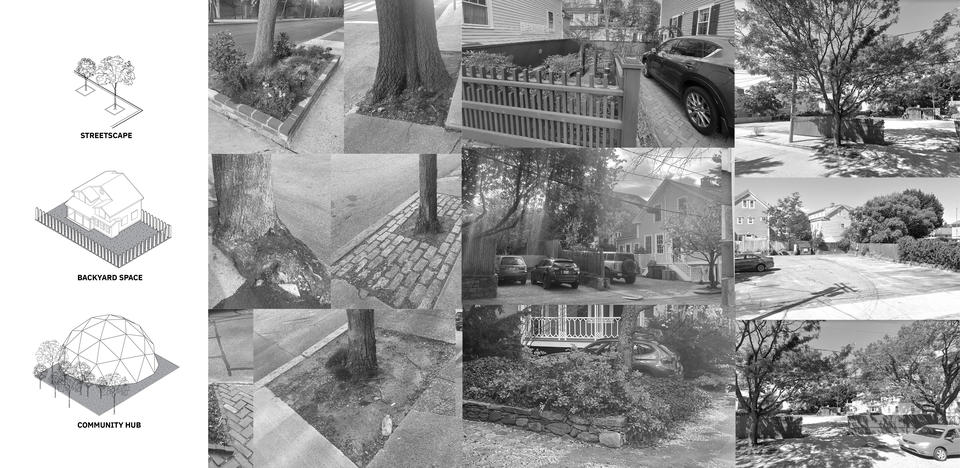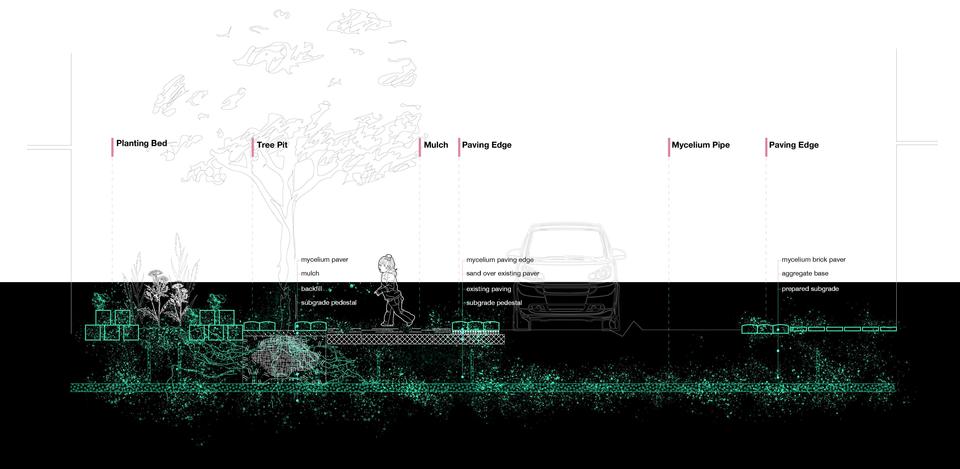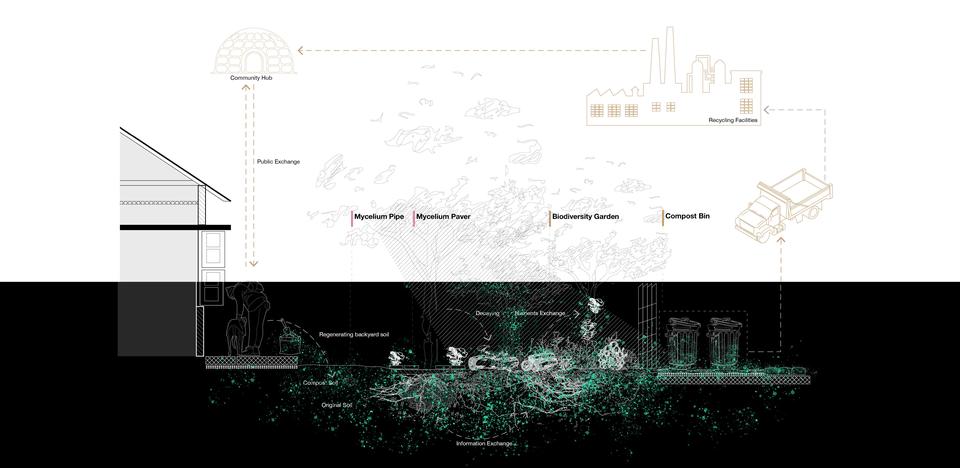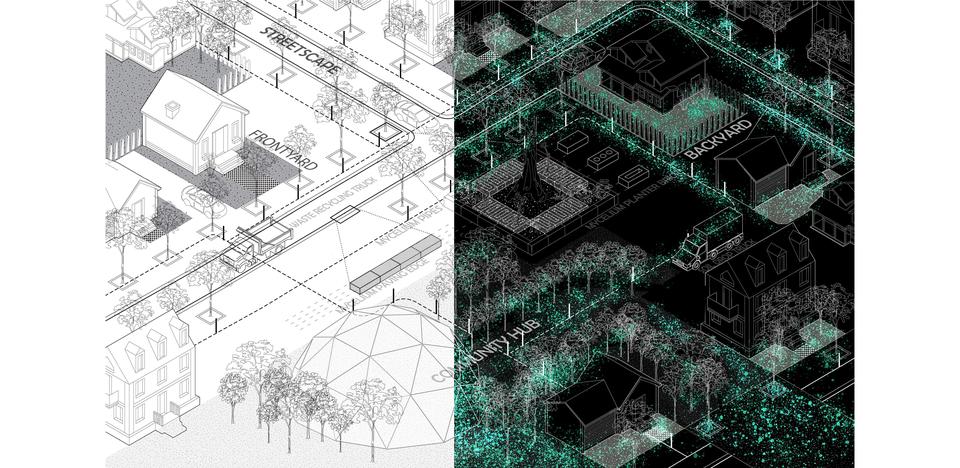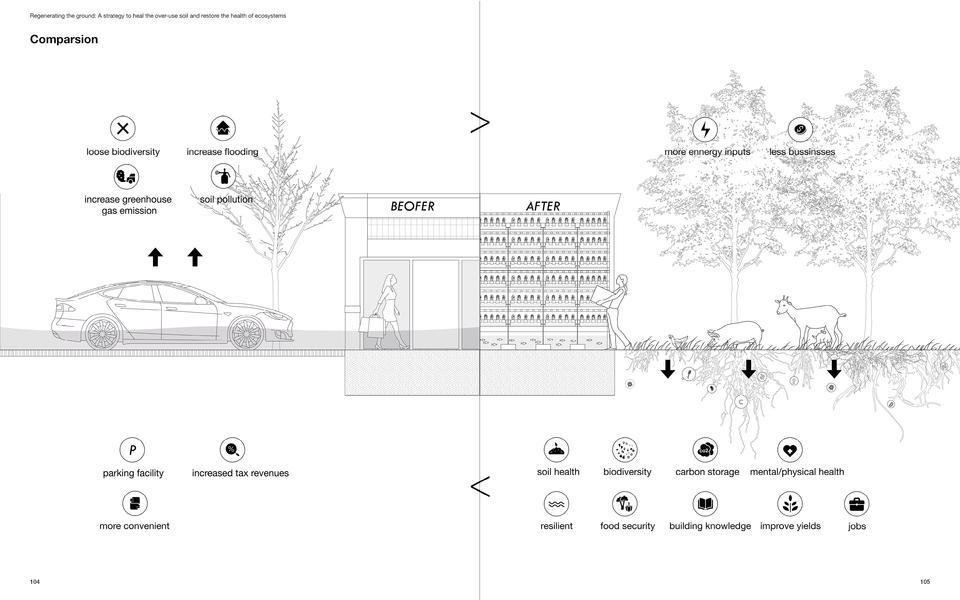Yuting Chen
City of Intelligent Soil-Systematic Approach towards Urban Soil Mutualism
Starting with identifying ‘Urban Soil Blindness’, which refers to the fact that people in cities tend to lose their awareness and connection with soil, this thesis focuses on developing a nexus of mycorrhizal, urban soil, plant system and urbanites. Soil is not just a simple substance for plants to root in. As a main responsive medium and the breeding bed for microorganisms and their transmission, soil brings the resilient yet vulnerable world of mankind and the vibrant and vigorous microbial world to each other in an infinite intimacy. As a lens, soil allows us to unfold the world of microbiome and the world of the urban underground. This thesis aims to address urban soil blindness by developing a design toolbox which covers planting, waste recycling, mycelium inoculation and social gatherings. Then by applying this toolbox to a neighborhood block, the thesis tests the ability to make an inter-connected soil body linking streetscape, residential backyards, and community hubs. This system provides extensible soil mobility and biodiversity (soil intelligence) and practical opportunities for human engagement (soil intimacy).
Image
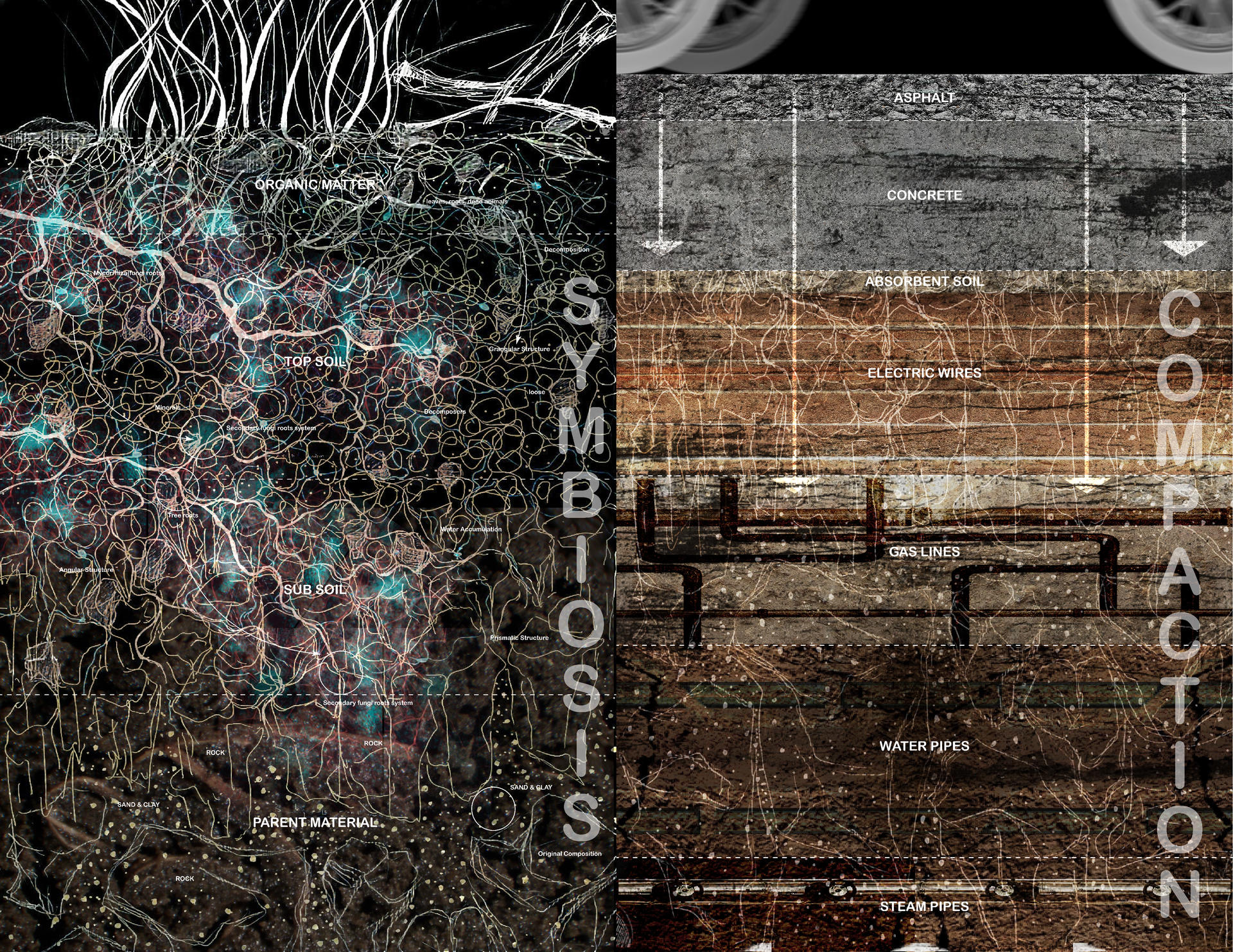
Natural Soil Profile vs Urban Soil Profile
WE ARE SOIL BLIND
This thesis focuses on developing a nexus of microbiome, urban soil, root system and human. It starts with identifying 'Urban Soil Blindness', which refers to the fact that people in cities tend to lose their awareness and connection with soil. Soil as a main responsive medium and the breeding bed for microorganisms and their transmission, has its forward-looking potential and value to attract the criss-cross, turbulent, resilient yet vulnerable world of mankind and the vibrant and vigorous universe of microbiome to each other in an infinite intimacy.
Image
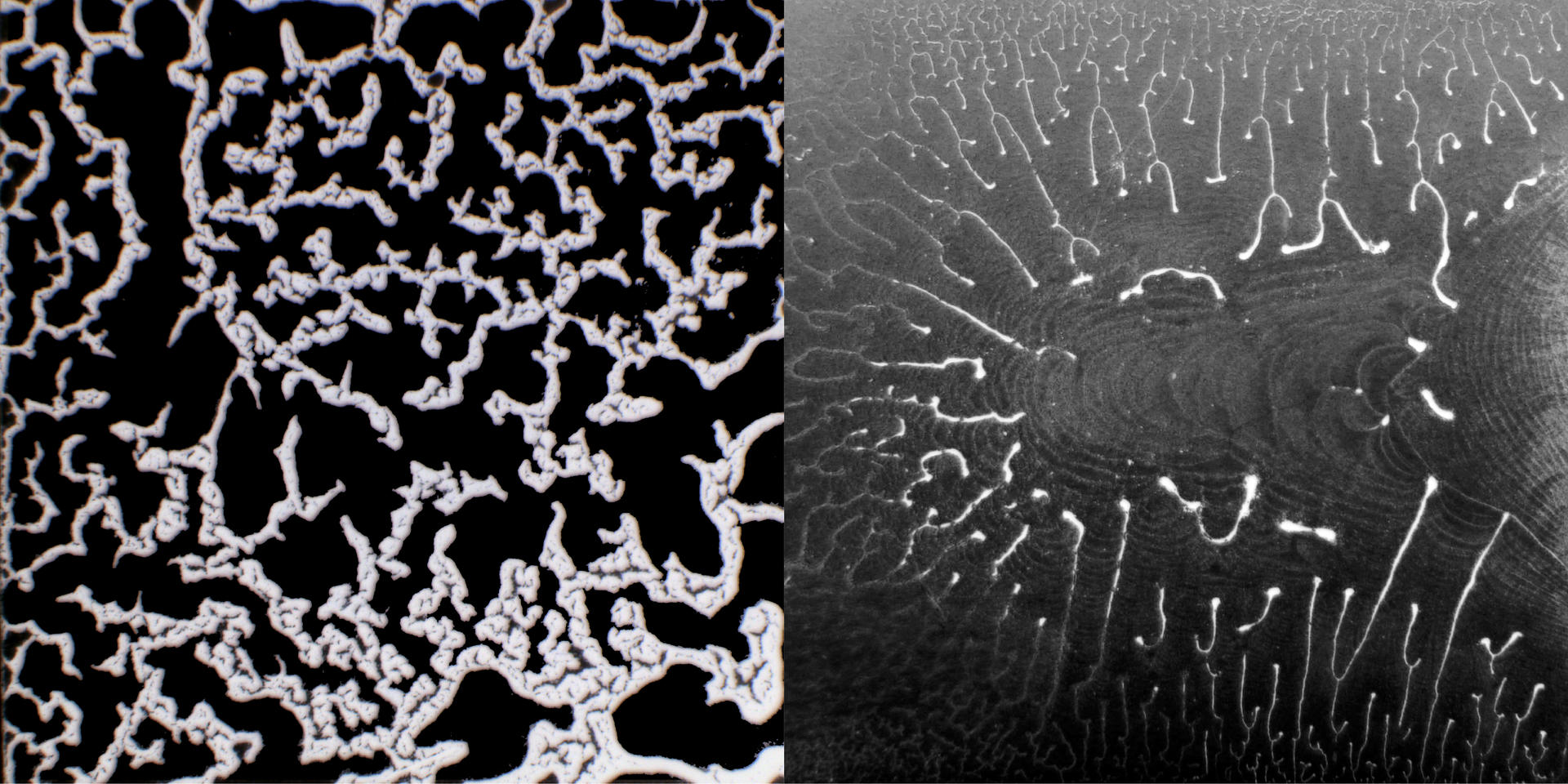
Micro Structure of Natural Soil Samples
SOIL HAS INTELLIGENCE
As a lens, soil allows us to unfold the world of microbiome and the world of urban underground. But before that, we must acknowledge other than ‘the dirt which crops will pop out from’, soil is so much more. Soil has an incredibly complex mechanism that brings roots, animals, fungi all into one communication system. Trees can recognize and talk to each other through mycelium networks which are buried and spread in the soil body. Microorganisms play a significant part of nourishing soil health which further guarantees the health of plants, animals and human beings. However, all that won’t happen, at least not to an impactful scale to improve the environment, when it comes to a city where ground is 90% paved and its underground is boarded up by numerous pipes and construction materials. Once the soil body is split into fragments, the positive transmission and dynamics across materials and species dies away.
Soil Intelligence and Soil Intimacy are two concepts that were brought up to respond to this urban dilemma - How can we make the city soil interconnected and vivifying again?
Soil Intelligence:
A malleable, expandable soil body that is designed to be self-healing, adaptive, sensitive but responsive to time and environment. Intelligent soil is a system that supports the growth and sustainability of healthy soil, microbiome activity, plant diversity and positive human engagement.
Soil Intimacy:
An intimate relationship between urbanites and urban soil based on the social recognition and cultural awareness that soil is not only a crucial element for ecological cycle, but also an environmental legacy.
Image

Material Test: Mycelium Brick
This project invented a sustainable loop of mushroom-mycelium brick-mushroom which allows mycelium to not only work as an living communication bridge between plant species but also become a dead but sustainable construction material to be practically applied into urban environment which will help the expansion of mycelium transmission and eventually soil linkage.
Image
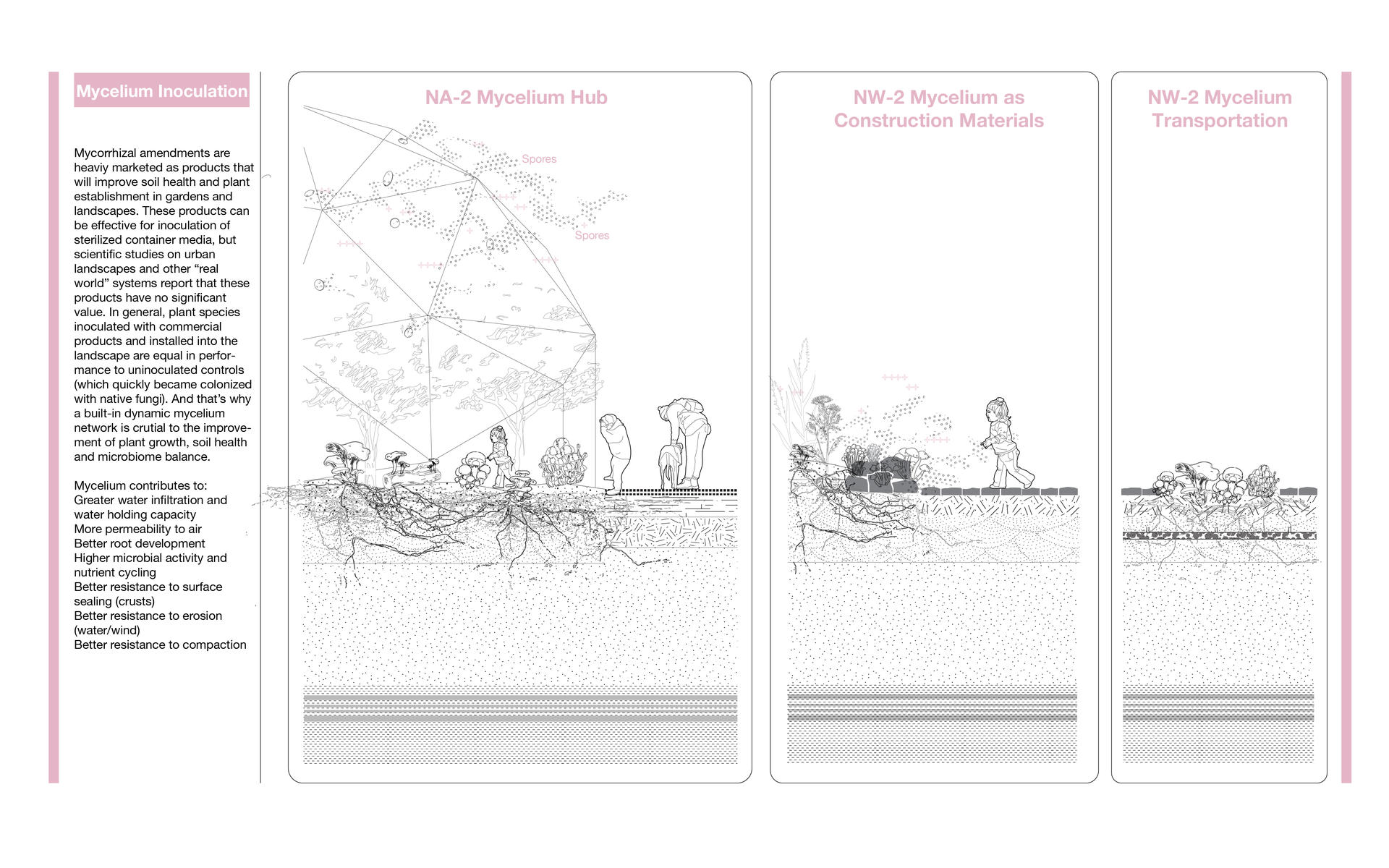
Soil Design Toolkit 1 - Mycelium Inoculation
- Architecture
- Ceramics
- Design Engineering
- Digital + Media
- Furniture Design
- Global Arts and Cultures
- Glass
- Graphic Design
- Industrial Design
- Interior Architecture
- Jewelry + Metalsmithing
- Landscape Architecture
- Nature-Culture-Sustainability Studies
- Painting
- Photography
- Printmaking
- Sculpture
- TLAD
- Textiles
